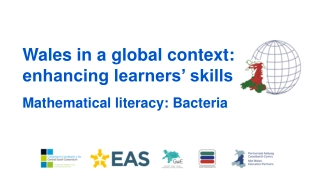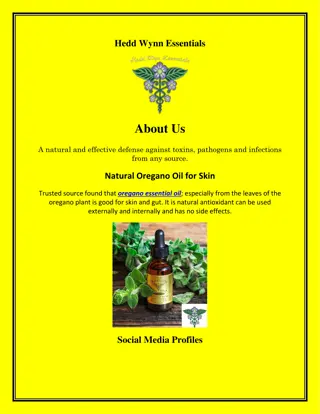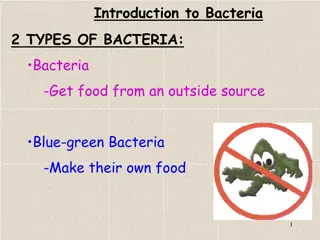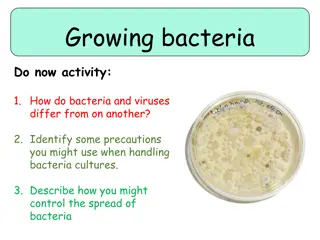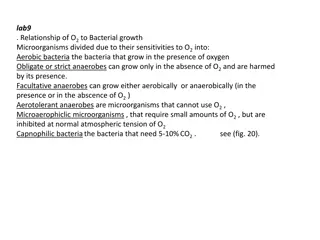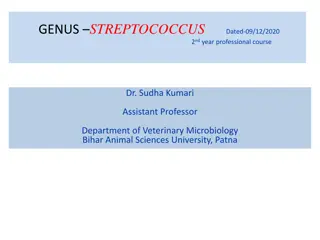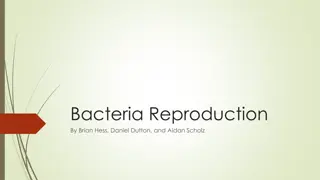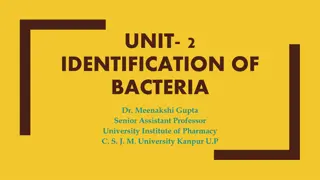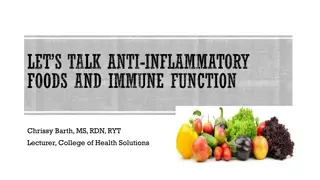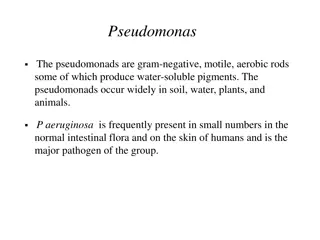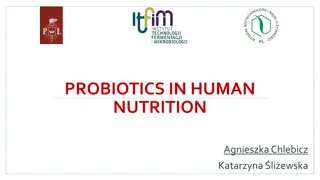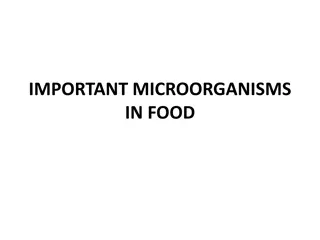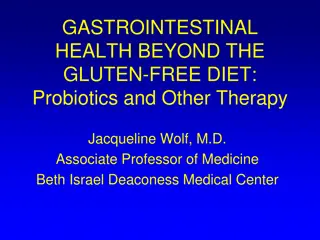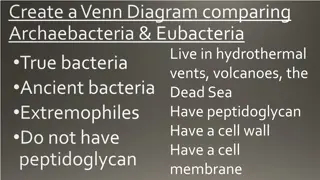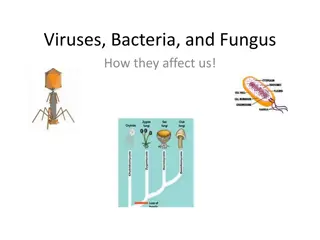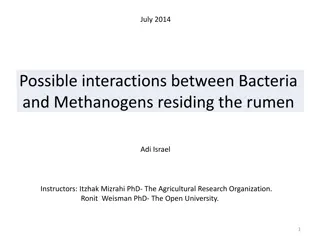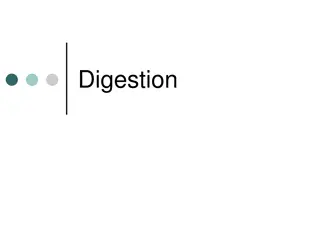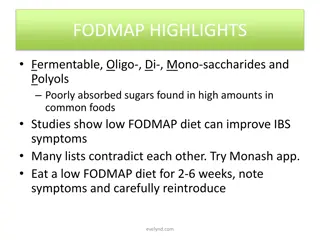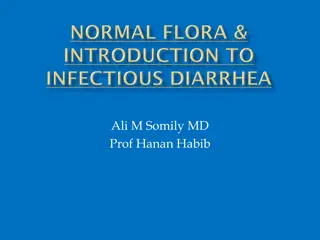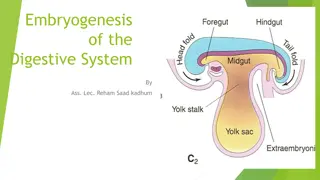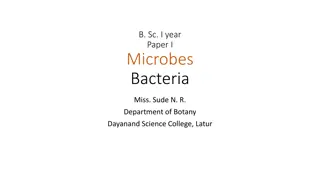Enhancing Cognitive Performance through Gut Microbiome Targeting
Explore cognitive performance, gut microbiome, and physiological responses in high-stress scenarios. Develop targeted inventions like pre- and probiotics for improved cognitive performance.
0 views • 5 slides
Wales in a global context: enhancing learners’ skills
World of bacteria through the lens of mathematics and science. This educational material delves into the characteristics, importance, and impact of bacteria on the environment and human health. From their small single-celled structures to their role in ecosystems, learn about the significance of bac
0 views • 10 slides
Oil of Oregano for Gut Health, wildoiloforegano.com
Trusted source found that oregano essential oil; especially from the leaves of the oregano plant is good for skin and gut. It is natural antioxidant can be used externally and internally and has no side effects. \/\/wildoiloforegano.com\/
2 views • 2 slides
Oregano Oil for Gut Health, wildoiloforegano.com
Trusted source found that oregano essential oil; especially from the leaves of the oregano plant is good for skin and gut. \/\/tinyurl.com\/bdz6rp89
2 views • 2 slides
Practical Tips for Resetting and Enhancing Gut Health
Uncover how stress, sleep, and exercise influence gut health. Gain practical strategies to manage stress, improve sleep quality, and incorporate regular physical activity.\n\n
2 views • 2 slides
Nourish Your Gut: Ayurvedic Diet Tips for Improved Digestion
Transform your digestive health with Ayurvedic diet tips designed to nourish and support your gut. Discover the importance of warm, freshly cooked foods and mindful eating practices in Ayurveda. Explore how incorporating pomegranate juice and warm wa
3 views • 6 slides
Exploring the Fascinating World of Bacteria: Types, Shapes, and Structures
Delve into the diverse characteristics of bacteria, from their food sources to shapes and major cell structures. Discover how bacteria play a crucial role in various environments, from soil to the human body.
0 views • 39 slides
Understanding Bacteria Cultures and Growth: Key Concepts and Practical Tips
Scientists culture bacteria to study them effectively. Differentiating between bacteria and viruses, maintaining precautions when handling bacteria cultures, and controlling their spread are vital. Tasks like watching relevant videos, self-assessments, steps for growing useful microorganisms provide
0 views • 17 slides
Understanding the Gram Stain Technique in Medical Microbiology Lab
The Gram stain is a crucial technique in bacteriology, dividing bacteria into Gram-positive and Gram-negative groups based on cell wall characteristics. This method involves using crystal violet, iodine, ethanol, and safranin to differentiate between the two types of bacteria. Gram-positive bacteria
0 views • 11 slides
Overview of Clostridial Diseases Caused by Clostridium Bacteria
Clostridial diseases are caused by bacteria of the genus Clostridium, which are anaerobes commonly found in soil, feces, and healthy animal tissues. These bacteria can lead to various diseases in animals such as black quarter, gas gangrene, necrotic dermatitis, and more. Understanding the different
0 views • 55 slides
Understanding Anaerobic Bacterial Growth and Culturing Methods
Anaerobic bacteria have specific sensitivities to oxygen, with categories such as aerobic, obligate anaerobes, facultative anaerobes, aerotolerant anaerobes, microaerophiles, and capnophilic bacteria. Methods like Anaerobic Jar and GasPak system are used for cultivating anaerobic bacteria, ensuring
0 views • 7 slides
Oil of Oregano for Gut Health, wildoiloforegano.com
Trusted source found that oregano essential oil; especially from the leaves of the oregano plant is good for skin and gut. https:\/\/wildoiloforegano.com\/
2 views • 2 slides
Overview of Streptococcus Bacteria and Classification
Streptococcus is a genus of gram-positive bacteria commonly found on skin and mucous membranes. It includes pathogenic and non-pathogenic species, with cell division along a single axis forming pairs or chains. The bacteria were first observed by Billroth and named by Ogston. Different types of stre
0 views • 28 slides
Understanding the Spoilage Flora in Raw Meat Products
Raw meat products are highly perishable due to the presence of various spoilage bacteria, yeasts, and molds. Factors such as nutrient availability, oxygen levels, storage temperature, and pH influence the predominant spoilage flora in meat. Psychrotrophic bacteria thrive in refrigerated storage, lea
0 views • 17 slides
Insights into Bacteria Reproduction and Cell Division
Explore the fascinating world of bacteria reproduction through binary fission, conjugation, and mitosis. Uncover the similarities and unique aspects of prokaryotic and eukaryotic cell division processes. Learn how conjugation plays a vital role in transferring genetic information between bacteria ce
0 views • 21 slides
Trickling Filter: A Sustainable Wastewater Treatment Solution
The trickling filter is a biological treatment process utilizing a solid media where bacteria accumulate to maintain high populations. Bacteria growth occurs on the media surface with oxygen provided by air diffusion. As bacteria metabolize waste, they reproduce, creating a biological layer. Filter
5 views • 26 slides
Understanding Bacterial Cell Structure and Function
Bacteria display unique cellular structures and functions that differ from eukaryotic cells. They have a simple structure with a plasma membrane but lack complex internal membrane systems. The cytoplasm contains inclusion bodies, ribosomes, and genetic material in the nucleoid. Bacteria can be categ
4 views • 21 slides
Bacteria Identification Techniques: Staining and Microscopy Overview
Staining techniques in microbiology play a crucial role in visualizing bacteria under microscopes. This content covers the importance of staining, types of dyes, wet and dry mounts, hanging drop technique, and different types of staining methods employed in identifying bacteria. Explore the basics o
0 views • 39 slides
Understanding Functional GI Disorders: A Comprehensive Overview
Functional GI disorders encompass a range of conditions affecting the gastrointestinal system, such as irritable bowel syndrome and disorders of the gut-brain interaction. These disorders are characterized by no structural abnormalities but are influenced by factors like motility disturbance, viscer
0 views • 42 slides
Understanding Anti-Inflammatory Foods and Immune Function
Our health is closely linked to the gut microbiome, with fiber playing a key role in feeding beneficial gut bacteria. Incorporating anti-inflammatory polyphenols from plant-based sources like fruits, vegetables, and herbs can promote a healthier gut. Additionally, fermented foods act as natural prob
1 views • 8 slides
Understanding Pseudomonas and Proteus Bacteria
Pseudomonas is a group of gram-negative, motile, and aerobic bacteria found in various environments, with Pseudomonas aeruginosa being a significant pathogen in humans. It can produce distinctive pigments and is resistant to many antimicrobial agents. Lab diagnosis involves culture testing on specif
0 views • 17 slides
Understanding the Role of Probiotics in Human Nutrition
Probiotics are live microorganisms that provide health benefits when consumed in adequate amounts. They should be safe, stable, nonpathogenic, and capable of various beneficial actions such as enhancing gut integrity, detoxifying, and modulating the immune system. Probiotics have a positive impact o
0 views • 14 slides
Important Bacterial Groups in Food
Bacteria play a crucial role in food, with various groups such as Lactic Acid Bacteria, Acetic Acid Bacteria, Propionic Acid Bacteria, Butyric Acid Bacteria, Proteolytic Bacteria, Lipolytic Bacteria, Saccharolytic Bacteria, and Pectinolytic Bacteria identified for their specific roles in food fermen
0 views • 17 slides
Building Resilience Through Healthy Habits: Sleep, Nutrition, and Self-Care
Cultivating resilience through impactful habits like prioritizing quality sleep, nourishing food choices, and meaningful breaks for self-care. Understanding the connection between sleep, mental health, immunity, gut health, and overall well-being. Embracing strategies for resilience such as a balanc
0 views • 33 slides
Understanding Gut Health and the Role of Probiotics
Gut health plays a crucial role in overall well-being, with a diverse community of bacteria in the gut contributing to digestion, immunity, and metabolic processes. Probiotics, beneficial microorganisms, can help maintain a healthy gut environment. This presentation by Dr. Jacqueline Wolf explores t
0 views • 31 slides
Comparison of Archaebacteria & Eubacteria Venn Diagram
Archaebacteria and Eubacteria are two types of bacteria with distinct characteristics. Archaebacteria are ancient bacteria that are extremophiles, living in harsh environments like hydrothermal vents and volcanoes, lacking peptidoglycan. On the other hand, Eubacteria are true bacteria with peptidogl
0 views • 60 slides
Understanding How Viruses, Bacteria, and Fungi Impact Human Health
Explore the intricate world of viruses, bacteria, and fungi and how they interact with living organisms. Learn about the structure and functions of viruses, the role of bacteria in diseases, and the implications of fungi on human health. Discover the different ways these microorganisms affect us and
0 views • 37 slides
Understanding Plant Pathology: Reproduction and Classification of Bacteria
This course on Fundamentals of Plant Pathology, led by Mr. Vikash Kumar, covers essential topics such as disease identification, pathogen nature, disease management strategies, pathogen classification, and plant disease diagnosis. It delves into the reproduction and classification of plant pathogeni
0 views • 16 slides
Interactions Between Bacteria and Methanogens in the Rumen
The rumen, an anaerobic fermentation chamber in ruminant animals, houses a diverse microbial community including bacteria, fungi, protozoa, methanogenic archaea, and phages. Methanogens play a crucial role in methane production using fermentation end products. Research aims to explore evidence of in
0 views • 21 slides
Understanding Viruses and Bacteria: A Biology Presentation by Mandie Lynn Walls
Explore the world of viruses and bacteria through this engaging biology presentation put together by Mandie Lynn Walls. Learn about the structure of viruses, different types of viruses like T4 Bacteriophage and Herpes Virus, the distinction between viruses and bacteria such as E. coli, vaccination m
0 views • 39 slides
Understanding the Role of Gut Bacteria in Obesity and Metabolic Disease
Trillions of bacteria in our gut play a crucial role in obesity and metabolic diseases. By analyzing studies on antibiotic effects, bacterial composition, and diet impact, we learn how gut bacteria influence weight gain, energy use, and overall health. Research shows diverse bacterial types affect w
0 views • 16 slides
Effects of Maternal Wheat Bran Supplementation on Piglet Microbiota
This study investigates the impact of maternal wheat bran supplementation on the microbiota and intestinal parameters of piglets, aiming to address gut disorders and the overuse of antibiotics in swine production. The research focuses on the potential benefits of prebiotics like wheat bran in improv
0 views • 16 slides
Understanding Digestion Process in the Gut
Learn about the intricate process of digestion that takes place within the gut. Explore how food is broken down, absorbed, and transformed into essential nutrients for the body, with a focus on the small intestine's role in absorption. Discover the importance of enzymes, absorption, and waste elimin
0 views • 58 slides
Understanding Low FODMAP Diet and Other Dietary Factors for Gut Health
Low FODMAP diet is a potential solution for managing IBS symptoms by avoiding poorly absorbed sugars. This diet involves eliminating certain carbohydrates found in common foods. Additionally, other factors like stress, gluten/dairy elimination, and various food compounds can impact gut health. Consi
0 views • 6 slides
Food Safety: Control Temperature to Prevent Bacteria Growth
Understand the importance of controlling food temperature to keep it safe from bacteria growth. Learn about the temperature danger zone, where bacteria thrive, and the proper handling procedures for buying, storing, cooking, holding, and reheating food. By following these guidelines, you can ensure
0 views • 17 slides
Understanding Acute Diarrheal Illness and Gastrointestinal Infections
Acute diarrheal illness is a common issue globally, leading to significant morbidity and mortality. This lecture covers the types of acute diarrhea, host defenses, pathogens like E. coli, Campylobacter, and Yersinia, and their management. It also discusses microbiological diagnosis methods, food poi
0 views • 30 slides
Understanding Bacteriophages and Antibiotic Resistant Bacteria
Explore the relationship between bacteriophages and bacteria, the survival advantage of polyvalency, and the impact of unfavorable conditions on species survival. Discover how manipulation of experiment variables helps establish resistance thresholds and how compounded negative effects affect specie
0 views • 9 slides
Embryogenesis of the Digestive System: A Detailed Overview
Formation of the gut tube during embryogenesis involves cephalocaudal and lateral folding of the embryo, resulting in the development of the foregut, midgut, and hindgut. The yolk sac and the allantois play key roles in the formation of the primitive gut. As the embryo develops, the vitelline duct a
0 views • 32 slides
Rising to the Challenge of Multidrug-Resistant Gram-Negative Bacteria
The presentation discusses the alarming rise of multidrug-resistant Gram-negative bacteria, highlighting the threat they pose to public health and the economy. Notable figures like Dr. Tom Frieden and Dame Sally Davies emphasize the urgency of taking action to prevent a potential return to a pre-ant
0 views • 58 slides
Detailed Overview of Bacteria's Structure and Function
Explore the world of bacteria with a focus on their microscopic nature, general characteristics, ultrastructure of bacterial cells, and components like cell envelope, cytoplasm, and nuclear material. Uncover the diverse forms of bacteria, their mode of nutrition, reproduction methods, and unique fea
0 views • 12 slides

